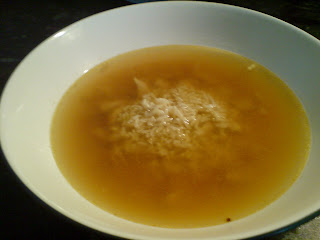One weird thing though – there’s no other gingerbread-type things in the book; where the heck is the Yorkshire Parkin? I shall add it to ever-increasing list of glaring omissions from the book.
Melt 5 ounces of slightly salted butter over a low heat and allow it to go tepid. Meanwhile mix 8 ounces of plain flour (or fine oatmeal, or half-and-half) with 4 ounces of pale soft brown sugar, a teaspoon of ground ginger (though I misread and added three, it was fine and suggest adding three instead of one) and a quarter teaspoon of baking powder, then add the butter and mix well. Press the mix down well with your hands in a baking tray that has been lined with baking paper and bake at 180°C for 30 minutes. Remove from the oven and cut into oblongs, but allow to cool in the tin.

#174 Grasmere Gingerbread I. I’ve not done many of the biscuit recipes from the book, as I don’t really get that excited about them, but these were delicious and very easy to make. I’ll never do cartwheels, however, so I’ll give them a stoic 7.5/10.












